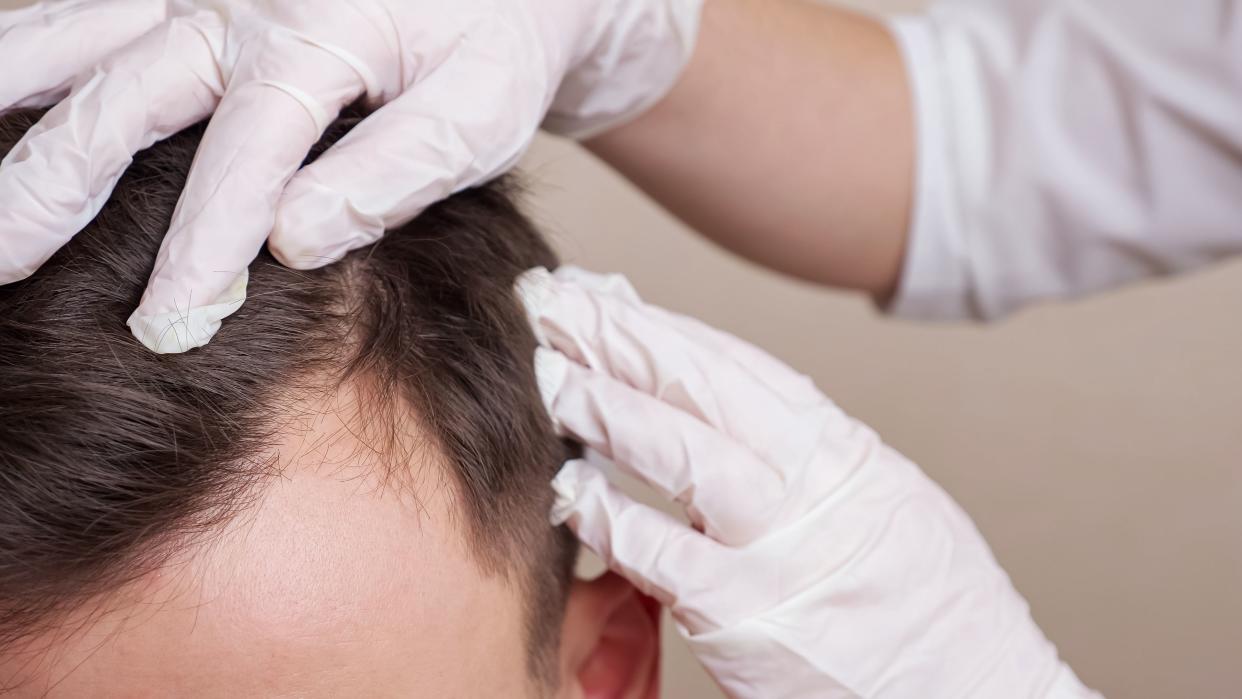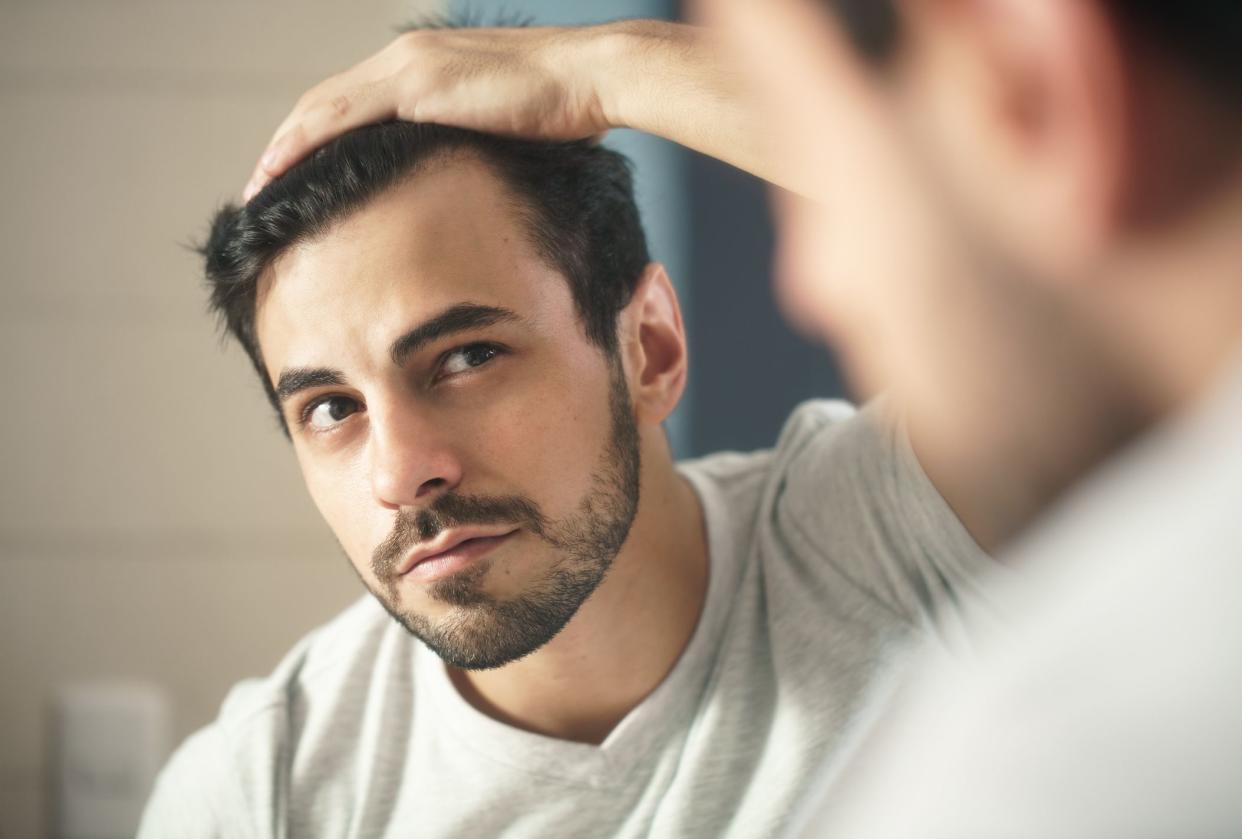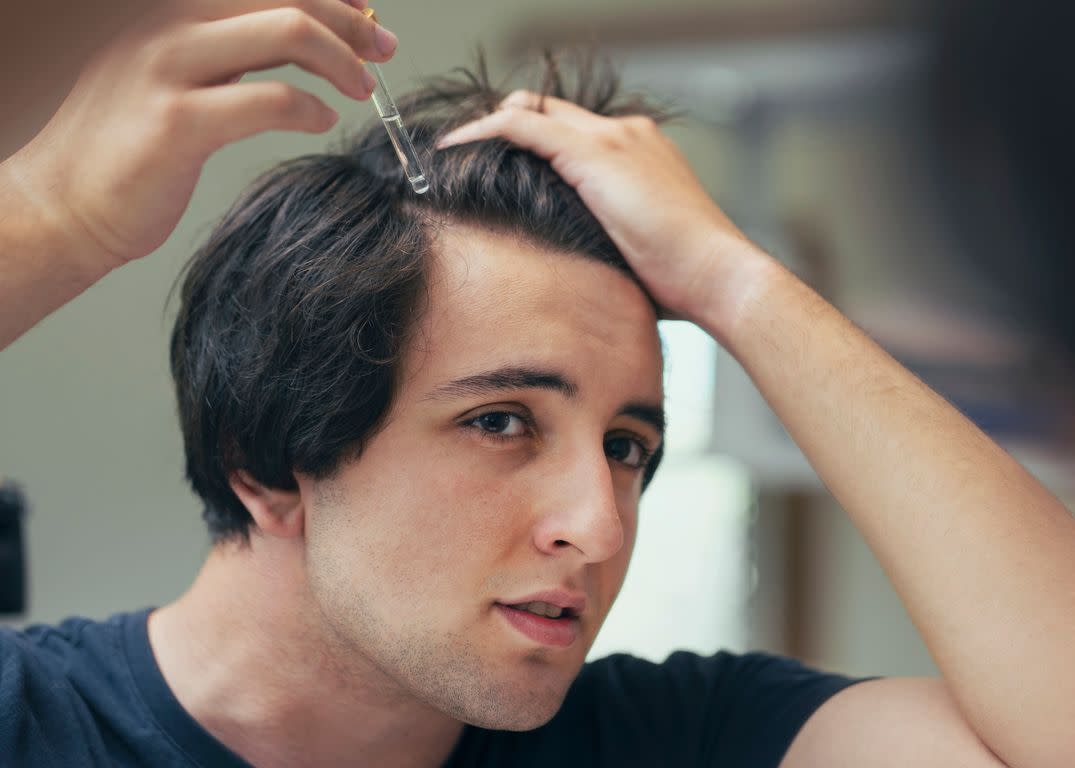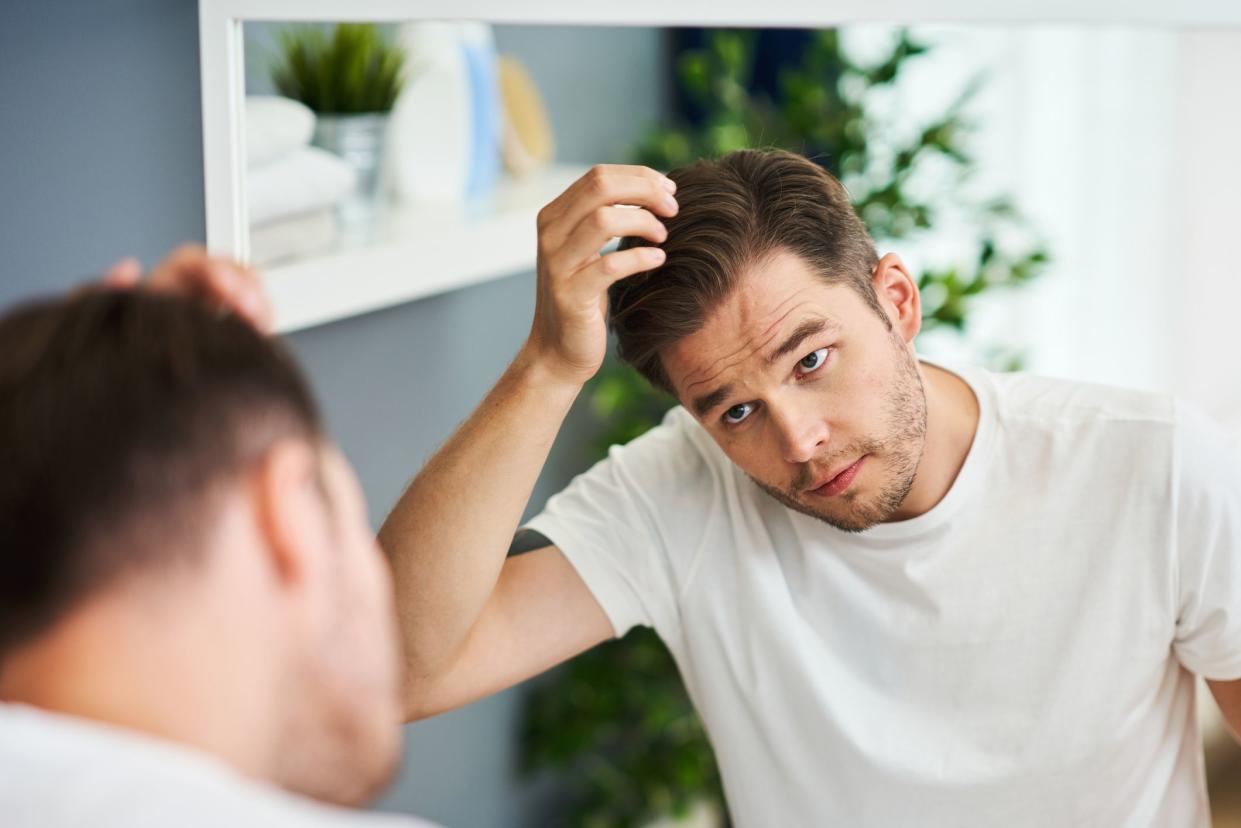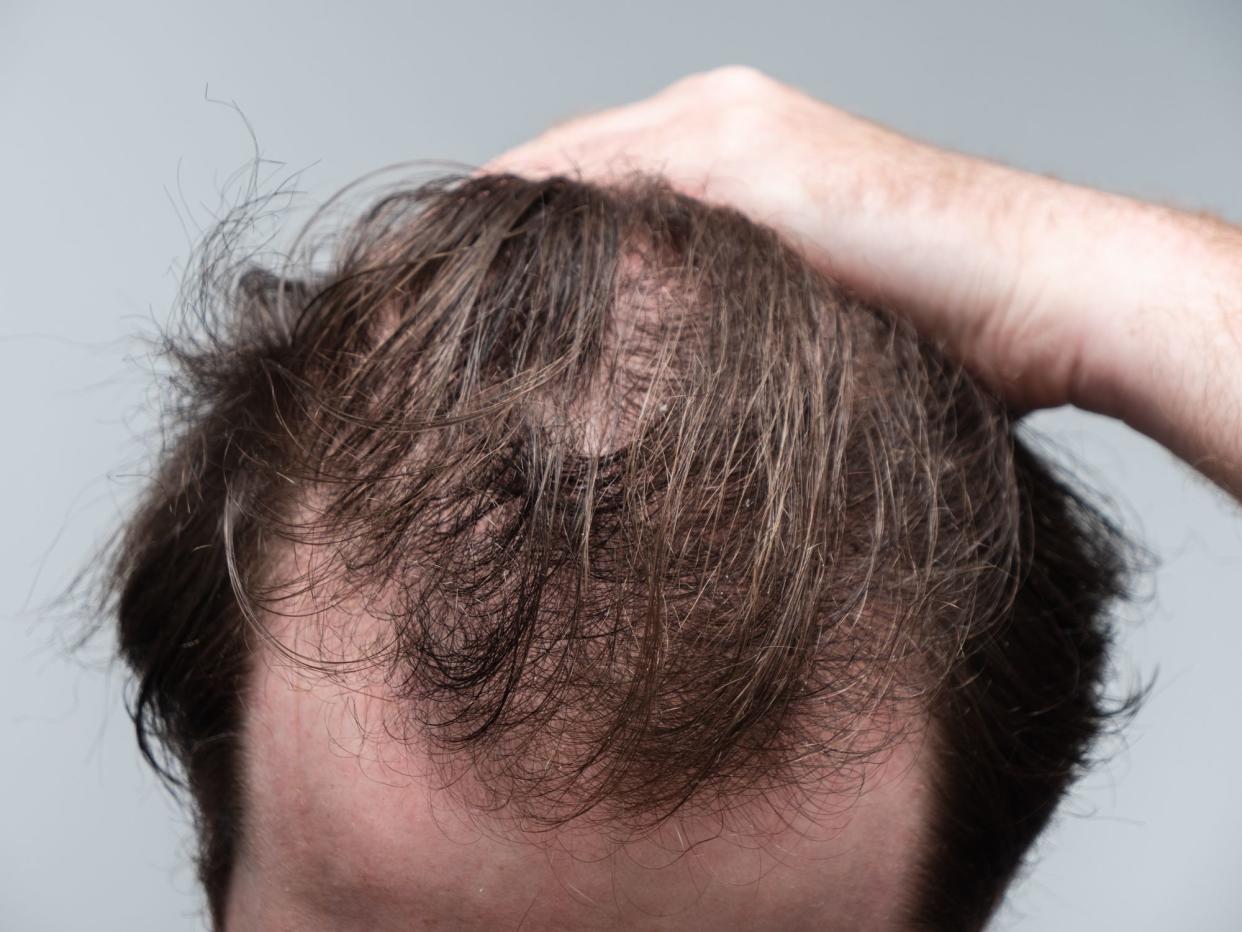The Norwood Scale: Hair Loss Pictures, Stages & More
Hair loss may all look the same to you. It’s either bald spots, a receding hairline, thinning hair or worst, all of the above.
So it might be surprising to find out there’s a scale devoted to determining the level ofmale pattern baldness. Why would anyone want to measure hair loss?
While balding can be alarming and stressful, it’s not something that happens all at once. Instead of suddenly waking up without any hair, most guys go bald gradually over years and decades.
Unfortunately, many men fail to notice their hair loss — and more importantly, to take action and treat it — until it’s too late.
That’s where the Norwood scale comes in. Below, we’ve explained how the scale works and listed the seven stages you may go through if you’re losing your hair.
What Are the 7 Stages of Hair Loss?
The Norwood Scale (also called the Hamilton-Norwood scale) is a seven stage classification system that’s used to measure and categorize the different stages of male pattern baldness.
Men affected by hair loss typically don’t lose their hair evenly from across their entire scalp. Instead, hair loss caused by male pattern baldness follows aspecific pattern— yes, that explains the name — that begins in a specific area.
Originally developed by James Hamilton, the scale was updated by Dr. O’Tar Norwood, a dermatologist and hair transplant surgeon, who revised Hamilton's classification after he saw different patterns of hair loss in men.
The Norwood hair scale has seven stages that measure the severity and pattern of hair loss.
Stage 1
Norwood stage 1 involves no significant hair loss or hairline recession, or just a little bit of hair loss.
Many men have a Norwood 1 pattern before experiencing some level of hair loss as theyage. Although it’s uncommon, some men maintain a Norwood Type 1 hair pattern for their entire lives.
Stage 2
A Norwood 2 stage is when you start to notice the loss of hair. At this stage, the early signs of the common M-, V- or U-shaped hairline begin to appear.
Many men notice the first signs of hair loss when their hairline begins to recede around the temples. This might also be called amature hairline.
Stage 3
Norwood Type 3 men’s hair loss is much more visible. During this stage, the hairline recedes more and takes on a clear M or V shape.
Some men develop a receding hairline accompanied by small balding areas on the scalp, also called a Norwood 3 hairline.
Men with hair that’s classified as Norwood 3 have visible, obvious hair loss at the temples and the frontal area of the scalp.
Some men with a Norwood Type 3 hairline also experience hair loss at the crown, or vertex. This is referred to as Norwood Type 3 vertex hair loss. Men with more significant hair loss around the frontal area of the scalp may be classified as having a Norwood Type 3A hair loss pattern.
While Type 2 areas of hair loss are usually easy to conceal with the right haircut, Norwood Type 3 hair loss is much more difficult to hide.
(Related:Do Hair Growth Products Work?)
Stage 4
Norwood 4 hair loss is more severe and obvious. Men with hair loss in this stage have lots of hair loss around the hairline, giving it an obvious bald appearance.
They also have sparse hair, or even no hair, on the vertex scalp, or top of the head.
Many men with stage four hair loss have a thick strip of hair that separates their hairline from the balding area around their crown.
Stage 5
As hair loss progresses to a Norwood 5, the band of hair separating your hairline and crown becomes smaller and thinner.
In this stage, you’ll have significant, obvious hair loss around your hairline and crown.
Some men develop Norwood Type 5A hair loss, with more significant hair loss on the scalp and less of a separating band between the hairline and crown.
For many men affected by balding, this is when the classic horseshoe pattern of hair loss becomes more visible.
Stage 6
Norwood Type 6 hair loss is very severe. By this stage, you’ll have lost almost all of the hair that previously made up your hairline and vertex scalp, or crown.
There may still be a band of hair to separate these areas, but it will be sparse and thin.
Although you may still have some hair across your scalp, coverage will be minimal and your scalp will be clearly visible through your hair in all lighting conditions.
By a Norwood 6 stage, the classic horseshoe pattern of hair on the back and sides of your head is easy to see.
Stage 7
Norwood 7 hair loss is the most severe form of hair loss. By this stage, almost none of the hair on your scalp will be left, aside from a few stray hairs or small areas with relatively mild hair growth.
At this point, the classic horseshoe pattern of hair around the back and sides of your head will be all that’s left. This hair may be relatively fine and lacking in density.
Tracking Hair Loss with the Norwood Scale
If you want to be proactive and try to get ahead of your hair loss (or know when to start treatment), you can use this system to track your hair loss.
Your first move when you start noticing hair loss should be to make an appointment with a certified dermatologist or healthcare provider who specializes in hair loss.
But, if you'd rather monitor the situation yourself before calling in the heavy artillery, we recommend taking a series of reference photos to use as a visual baseline and track any changes in your hairline over the next few months or years:
Take one photo of your hairline. Make sure your face and hairline are well-lit, as it can be hard to see your hairline clearly in a poorly lit or underexposed photo. Tilt your head forward slightly so that your hairline and the top of your head are both visible.
Next, take a photo of your face profile (the side view of your face) by putting your smartphone on a shelf and using the self-timer to take a photo of yourself. This will show any change in your hairline around the temples.
Then take a photo of the top of your head by holding your smartphone above you using a selfie stick, then using the front camera. Or ask another person to take your photo. This will show any hair loss on your scalp and crown.
Finally, take a photo of the back of your head. You can do this using a selfie stick, or by asking someone else to take your photo. This will provide a clear view of any hair loss at the crown of your scalp.
Every two to three months, take a new set of photos and check for any changes. To make sure you keep regular photos of your hair, you can set a reminder for every other month using your phone calendar.
You can compare each set of photos to Norwood scale hair. If your hair has advanced from one stage to the next, it’s a good signal that you’re losing your hair and should think about taking action.
Understanding How Hair Loss Happens
Before we get into how to treat each type of hair loss on the Norwood hair scale, you should know a bit about the causes of hair loss.
A variety of factors can cause your hair to start thinning or to develop a receding hairline. But one of the top causes isgenetics.
Certain people have hair follicles that are more sensitive to the hormonedihydrotestosterone(or DHT, a naturally occurring male steroid hormone that’s converted from testosterone) than others.
For people with hair follicles that are sensitive toDHT, even normal amounts of the hormone can cause hair follicles to shrink and eventually fail to grow, which creates the horseshoe-shaped hair pattern that many bald men have.
Thishereditary hair loss— also called androgenetic alopecia or male pattern hair loss — can be more difficult, but not impossible, to treat.
Otherreasons why men go baldcan include stress, aging, diet, medical conditions and more.
(Related:How to Get Rid of Bald Spots)
How Is Hair Loss Treated?
The earlier you take action to treat and prevent hair loss, the more of your hair you’ll usually be able to keep.
If you notice your hair advancing from one Norwood type to the next, or if younotice a receding hairlineor other commonearly signs of balding, take action as soon as possible. If you treat your hair loss while you’re still Norwood 2 or 3, you may be able to keep most or all of your hair.
As hair loss progresses to the later stages, it becomes more difficult to treat effectively, even via surgical procedures such as hair transplantation.
At Norwood 3 or 4 stage you should start looking into hair loss treatment options. The most common treatments are medications known asfinasterideandminoxidil, which have been approved by the Food and Drug Administration (FDA) and can slow down or stop further hair loss.
These medications work in different ways. Finasteride (sold under the brand name Propecia)blockstestosterone from being converted into DHT and encourages new hair growth.
Also sold as Rogaine, minoxidil works by moving your hair follicles into a state ofactive growthand stimulating blood flow to your scalp. Essentially, minoxidil keeps thehair growth cyclegoing by encouraging new hair growth on your head.
If you have Norwood Type 5 hair loss though, your treatment options are much more limited than they are if you have milder Norwood 4 hair loss.
Medications like minoxidil and finasteride may help to prevent your hair loss from getting worse, but it’s important not to expect miracles from medication when your hair loss is relatively severe.
At Norwood stage 5, hair transplant surgery might be a viable option to add some coverage to your scalp and hairline. Two common hair transplant options are follicular unit extraction (FUE) and follicular unit transplantation (FUT).
Beyond Norwood stages 6 and 7, however, is when hair loss is very difficult to treat and medications might not have much of an impact.
There’s still one option: shave your head and own the fact that you’re bald.
Not only does Mr. Clean look unapologetically masculine, but it’s also a simple way to save money that you’d otherwise spend on haircuts.
Final Takeaway on the Norwood Scale
Although not perfect, healthcare professionals and hair transplant surgeons commonly refer to stages of the Norwood scale to diagnose and treat hair loss in men.
The Norwood hair scale measures male pattern baldness in seven stages to determine the severity and pattern of hair loss.
Norwood stages 1 and 2 signify early signs of hair loss, with either no signs of balding or the beginnings of a receding hairline and noticeable bald spots.
Stages 3 through 5 indicate more significant hair loss and recession of the hairline, while almost all your hair is gone in stages 6 and 7 of hair loss.
Early Norwood stages are receptive to treatment from medications like finasteride and minoxidil. Later stages may require hair transplants, although these aren’t always a guaranteed solution.
This article originally appeared on Hims.com and was syndicated by MediaFeed.org.
More from MediaFeed
Testosterone and Hair Loss: What's the Link?
https://www.msn.com/en-us/health/other/testosterone-and-hair-loss-whats-the-link/ar-BB1n4IdB

